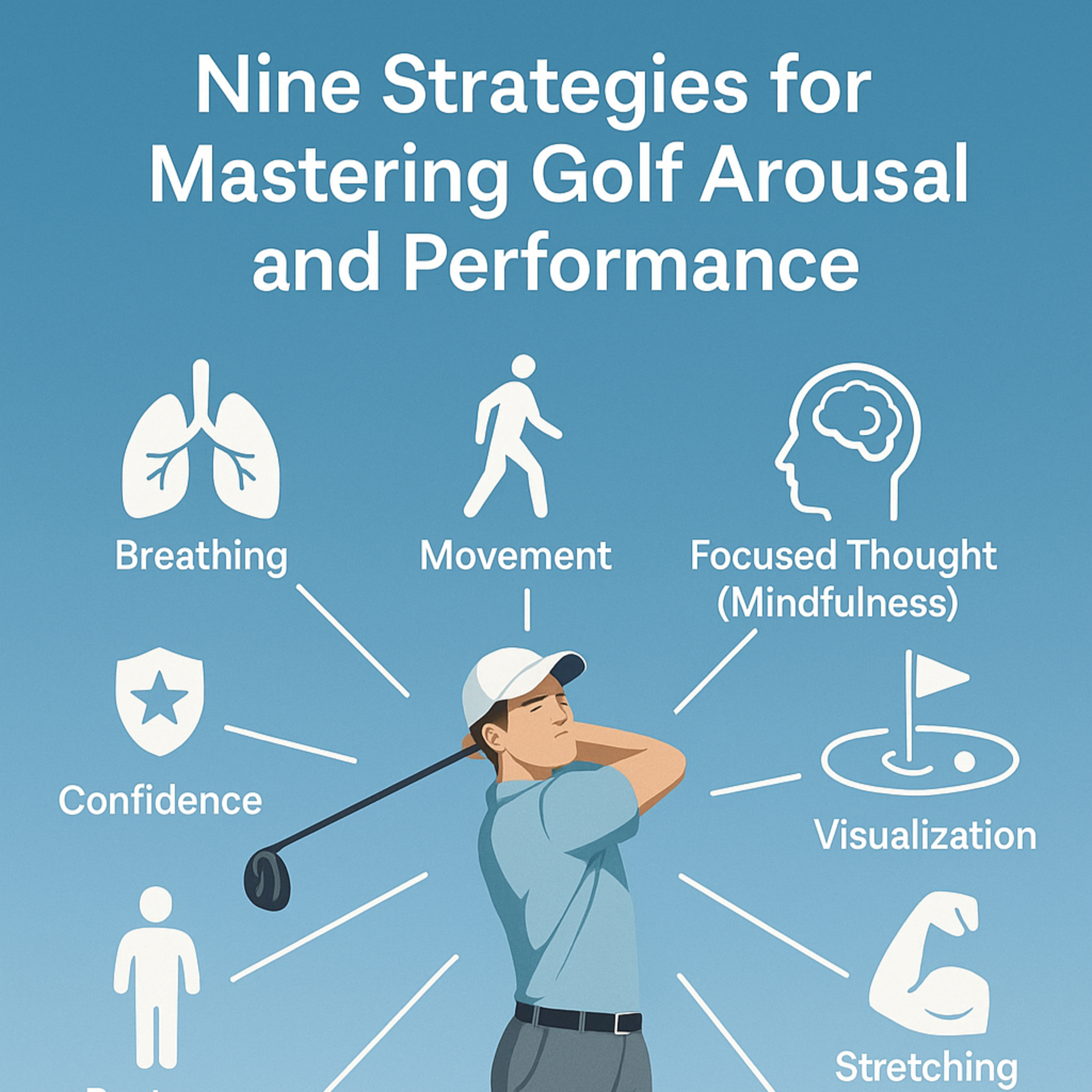#244 Nine Strategies for Mastering Golf Arousal and Performance
- Author
- Golf247.eu
- Published
- Wed 04 Jun 2025
- Episode Link
- https://podcasters.spotify.com/pod/show/puttin-pro/episodes/244-Nine-Strategies-for-Mastering-Golf-Arousal-and-Performance-e33oorf
In golf, controlling your nervous system—especially under pressure—is key to consistent performance. Excitement, fear, or anticipation all trigger physiological arousal that can disrupt rhythm, focus, and decision-making. To play your best, you must learn to manage this internal energy.
These nine strategies form the foundation of performance coaching. They are simple, trainable, and highly effective when practiced consistently.
Your autonomic nervous system regulates involuntary functions like breathing, heart rate, and muscle tone. It consists of two branches:
The sympathetic system (arousal/activation)
The parasympathetic system (calming/recovery)
What high arousal causes:
Elevated heart rate and blood pressure
Shallow breathing or breath-holding
Muscle tension and physical tightness
Racing thoughts and reduced concentration
How it affects performance on the course:
Mental overload: You lose focus and presence.
Rushed motion: Swing tempo breaks down.
Loss of control: Focus shifts from process to outcome.
Physical stress: Breathing tightens, coordination suffers.
With proper tools, you can train your body and mind to stay composed and perform under pressure.
1. BreathingSlow, deep breathing is the fastest way to calm the nervous system. Breathe in deeply, then exhale twice as long. Use your breath to reset before each shot, after a poor shot, or during delays. It clears your mind and reduces tension.
2. MovementHow you move reflects how you feel. Fast, jerky movements signal internal stress. Deliberate, rhythmic movement supports inner calm. Walk smoothly. Grip the club with purpose. Calm movement leads to calm execution.
3. Focused Thought (Mindfulness)Stay in the moment. Focus only on the shot at hand—not the last hole or your score. Train your mind to return to the present every time it wanders. Say to yourself: “I’m here. This is the shot.”
4. VisualizationMentally rehearse your shot before every swing. Visualize the ball flight, bounce, and roll. Picture the swing and feel its rhythm. The clearer your image, the more effective the result. Visualization links intention with execution and builds confidence.
5. RoutineA reliable pre-shot routine provides structure in high-pressure situations. Include:
Evaluation
Visualization
Breathing
Execution
Train your routine until it becomes automatic—especially when under stress.
6. Stretching
Light stretching helps release hidden tension in the shoulders, neck, and hands. It also resets your tempo and supports relaxed movement. Stretch briefly before a round or between holes if tension builds.
7. Posture
Your posture reflects your mental state. Stand tall with an open chest and relaxed shoulders. Good posture improves breathing and reduces nervous tension. Stay aware of your body language before and after every shot.
8. Biofeedback
Technology (like heart rate monitors) can show how your body reacts to pressure. But even simple awareness—like noticing shallow breathing or clenched fists—can serve as feedback. Respond with a calming breath or movement adjustment.
9. Confidence
Confidence is not arrogance—it’s a belief in your ability to respond. Build it through preparation, experience, and inner dialogue. Say to yourself: “I’ve done this before. Trust your process.” Confidence stabilizes your decisions and emotions under pressure.
These strategies are not isolated. They reinforce one another to build readiness and control. With consistent practice, they help you:
Stay focused in the moment
Manage tension before it interferes
Build a dependable pre-shot process
Play with rhythm and confidence
Great golf doesn’t happen by force. It comes when body and mind work together—fluid, calm, and committed. That’s how you enter the zone.
This system works—on the course and in life.
The Nine Strategies
